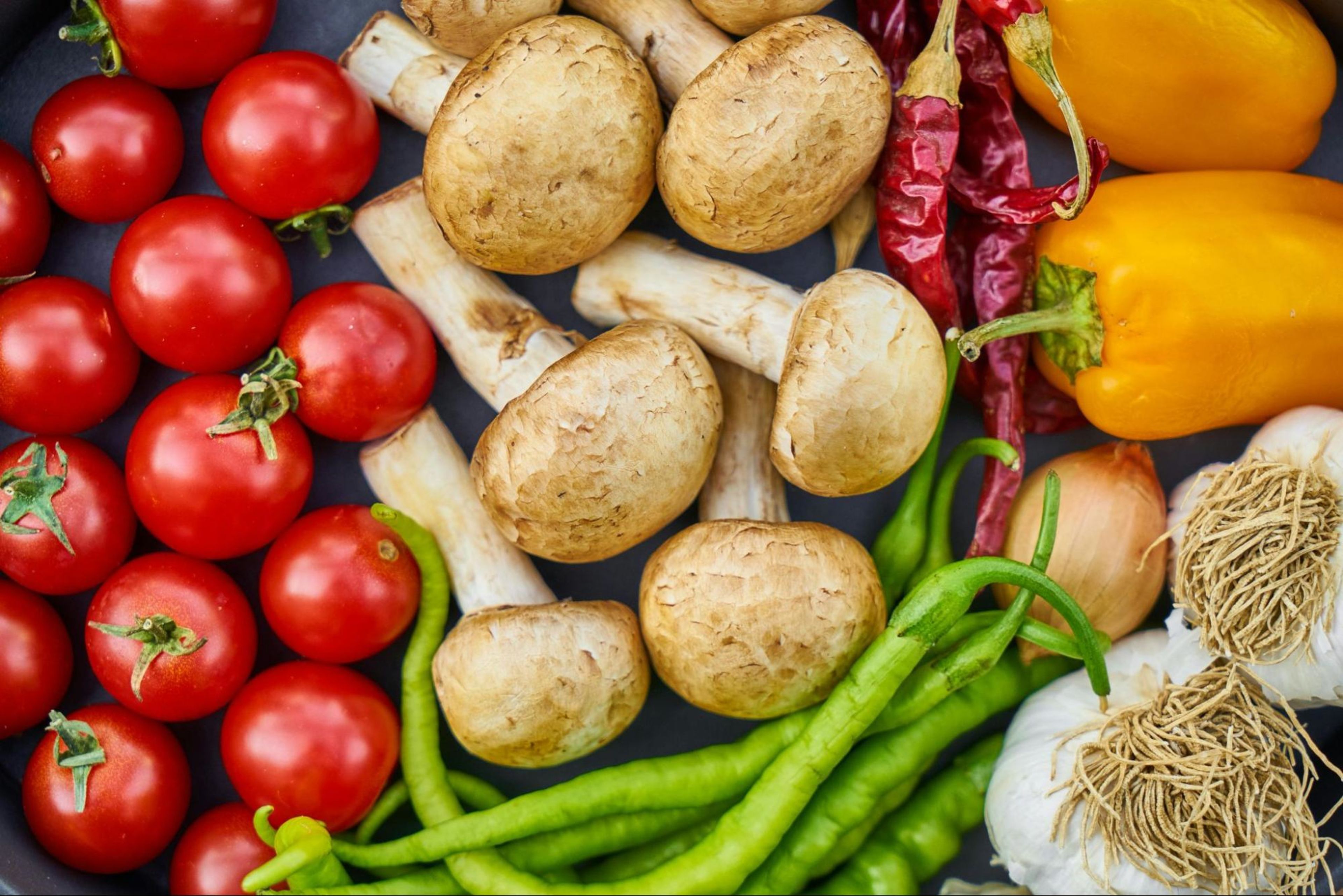What Are the Best Vegetables to Eat? 37 Delicious Veggies to Add to Your Healthy Diet

Vegetables are the foundation of a healthy, balanced diet. Packed with essential vitamins, minerals, fiber, and antioxidants, they play a critical role in maintaining optimal health, supporting digestion, boosting immunity, and reducing the risk of chronic diseases.
We all have our favorites and probably gravitate towards the vegetables we feel most comfortable with; but as they say, variety is the spice of life, so it’s worth exploring which vegetables pack the most nutritional punch and would make an impactful addition to your diet.
In this post, we’ll explore the most nutrient-dense vegetables to add to your plate and how incorporating a wider variety can maximize their health benefits.
Understanding nutrient density in vegetables
What is nutrient density?
Nutrient density refers to the amount of essential nutrients a food provides relative to its calorie content. In other words, a nutrient-dense food delivers a high level of vitamins, minerals, and other beneficial compounds per calorie. Think of nutrient-dense foods as the opposite of those foods sometimes deemed “empty calories”.
Why nutrient density matters:
Eating nutrient-dense vegetables ensures that your body gets the nourishment it needs without excessive calories. Favoring nutrient-dense foods helps to support a healthy weight while maintaining energy levels, enhancing metabolic function, and preventing nutrient deficiencies.
Common nutrients in vegetables and their benefits:
Fiber: Promotes digestive health, a robust gut microbiome, and supports satiety (feeling full).
Vitamin A: Supports vision, skin health, and immune function.
Vitamin C: An antioxidant that boosts immunity and aids in iron absorption.
Vitamin K: Essential for blood clotting and bone health.
Folate: Crucial for DNA synthesis and cell division. Potassium: Helps regulate blood pressure and fluid balance.
Phytonutrients and antioxidants: Reduce inflammation and support overall body function.
What are the best vegetables to eat?
Let’s be clear about one thing: There are no vegetables that are inherently better than others, and we aren’t here to crown the best vegetable of all!I would argue that the best vegetables therefore are the ones that you enjoy eating, have no allergies or sensitivities to, and can realistically fit into your diet.
Let’s break down vegetables into some key categories and highlight 37 particularly healthy veggies you should consider adding to your plate, including:
Kale
Spinach
Swiss chard
Arugula
Broccoli
Brussels sprouts
Cauliflower
Cabbage
Bell peppers
Carrots
Red cabbage
Beets
Garlic
Onions
Leeks
Shallots
Sweet potatoes
Beets
Carrots
Parsnips
Tomatoes
Lentils
Chickpeas
Black beans
Green peas
Button mushrooms
Shiitake mushrooms
Portobello mushrooms
Cremini mushrooms
Nori
Kelp
Wakame
Dulse
Butternut squash
Acorn squash
Zucchini squash
Spaghetti squash
1. Leafy greens
Examples: Kale, spinach, Swiss chard, arugula
Why they're great: Leafy greens are rich in vitamins A, C, K, and folate, as well as iron and calcium. They’re the definition of nutrient density: low in calories, but high in antioxidants like lutein and zeaxanthin, which support eye health.
How to enjoy them:
Toss a handful of spinach into smoothies.
Sautee kale with garlic and olive oil.
Add arugula to salads or sandwiches.
Stir Swiss chard into soups.
2. Cruciferous vegetables
Examples: Brussels sprouts, broccoli, cauliflower, cabbage
Why they're great: These veggies are high in fiber, vitamins C and K, and compounds like sulforaphane that may help fight cancer. They support the body’s detoxification pathways, and digestive health.
How to enjoy them:
Roast Brussels sprouts with balsamic glaze.
Steam broccoli as a side dish.
Mash cauliflower and prepare like you would mashed potatoes.
Make coleslaw with shredded cabbage.

Did you know?
Over 90% of Hydrow members are still active one year later.
3. Colorful vegetables
Examples: Bell peppers, carrots, red cabbage, beets
Why they're great: Brightly colored vegetables are full of antioxidants like beta-carotene, anthocyanins, and vitamin C. These compounds help fight inflammation and support skin and immune health.
How to enjoy them:
Snack on raw bell pepper strips dipped in hummus.
Roast carrots with miso.
Add shredded red cabbage to tacos.
Blend cooked beets into a smoothie.
4. Allium vegetables
Examples: Garlic, onions, leeks, shallots
Why they're great: Alliums contain sulfur compounds that support heart health and have antimicrobial properties. They're also rich in antioxidants and may help lower blood pressure.
How to enjoy them:
Sautee onions for soups and stews.
Roast garlic for a rich spread.
Toss leeks into omelets.
Caramelize shallots for a savory topping on your favorite proteins.
5. Root vegetables
Examples: Sweet potatoes, beets, carrots, parsnips
Why they're great: These are complex carbohydrates that provide fiber, potassium, and antioxidants. Sweet potatoes are especially high in beta-carotene, while beets offer nitrates that may improve blood flow and athletic performance. Highly active individuals in particular should indulge in root vegetables as a way to meet their increased need for carbohydrates and essential nutrients.
How to enjoy them:
Bake sweet potato fries drizzled with olive oil.
Spiralize beets into salads.
Roast parsnips with herbs.
Make carrot soup.
Related blog: Is Diet More Important Than Exercise?
6. Tomatoes
Why they’re great: While technically a fruit, tomatoes are loaded with lycopene, a powerful antioxidant linked to reduced risk of heart disease and cancer. They also provide vitamin C, potassium, and folate.
How to enjoy them:
Add cherry tomatoes to salads.
Blend tomatoes into pasta sauces.
Roast tomatoes for a sweet flavor.
Enjoy sliced tomatoes on toast with avocado.

Explore Hydrow’s library of 5,000+ rowing, circuit training, yoga, Pilates, and mobility workouts.
7. Legumes
Examples: Lentils, chickpeas, black beans, green peas
Why they're great: Legumes are rich in protein, fiber, iron, and folate. They support heart health, blood sugar regulation, and satiety, making them a great meat alternative for vegetarians. Legumes are particularly beneficial for those following a more plant-based diet as a way to meet their protein requirements.
How to enjoy them:
Make lentil soup.
Roast chickpeas for snacks.
Toss black beans into tacos.
Puree peas into dips.
8. Mushrooms
Examples: Button, shiitake, portobello, cremini
Why they're great: Mushrooms are a source of B vitamins, selenium, and ergothioneine—a unique antioxidant. They have immune-boosting and anti-inflammatory properties.
How to enjoy them:
Grill portobello mushrooms as burger replacements.
Stir-fry shiitake mushrooms with veggies.
Sauté button mushrooms for pasta.
Add cremini mushrooms to risottos.
9. Sea vegetables
Examples: Nori, kelp, wakame, dulse
Why they're great: Sea vegetables are rich in iodine, which is essential for thyroid function, as well as calcium and magnesium.
How to enjoy them: Apart from the wonderful excuse to eat more sushi, you can buy dulse flakes to sprinkle on salads, or make miso soup with wakame.
10. Squash varieties
Examples: Butternut, acorn, zucchini, spaghetti squash
Why they're great: Squash is high in fiber, vitamin A, and vitamin C. Winter squash is especially rich in complex carbs, while summer varieties are lower in calories and carbs.
How to enjoy them:
Roast butternut squash cubes
Bake acorn squash with cinnamon.
Spiralize zucchini into noodles.
Use spaghetti squash in place of pasta.
The final crunch
From leafy greens to cozy root vegetables and hearty legumes, vegetables come ready made in an incredible variety of nutrient-dense options to fuel your health. These powerhouse plants deliver an array of essential nutrients that support everything from brain function and heart health to strong bones and glowing skin.
If you’re stuck in a vegetable rut, try swinging by a farmer’s market and grab some new vegetable you’ve got no idea what to do with. We live in an age where there are so many resources out there such as recipes and different cooking methods, so that one mystery vegetable can be the gateway to endless culinary possibilities.
Adding more vegetables to your diet doesn’t have to be boring. Whether you’re roasting, blending, sautéing, or simply snacking, getting creative with veggies is one of the easiest and most delicious ways to support your well-being every day.
















